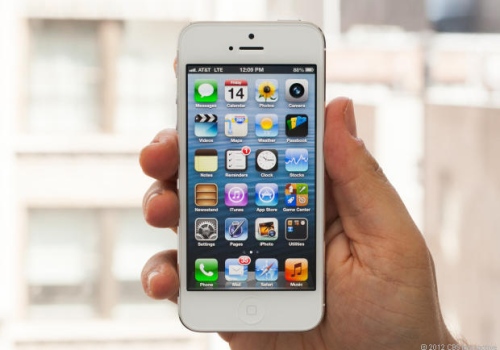iPhone and innovation: Is hardware the only place Apple can go to keep up the buzz?

OK, so it was a quiet news day, but I was still surprised by the excitement generated last week by the rumour Apple is maybe – maybe – testing something that maybe - maybe - will turn out to be iOS 7, maybe even running on a iPhone 5S (or an iPhone 6, depending on what Apple names the device).

This revelation is, of course, all rather dog bites man. The excitement would be more justified if Apple had decided to stop developing new iterations of one of the most wildly successful smartphones of all time.
And sure, Apple wrongfooted everyone with an unexpected refresh of the iPad in October, but most industry watchers are expecting an iPhone 5S (or iPhone 6) to surface from the middle of next year. So, Apple testing a new OS and device now would fit in with that schedule - not to mention being a handy way to ignite interest about what the next version will look like.
Read this
With the seventh iteration of the iPhone, Apple faces a classic dilemma: it has a successful product in a hyper-competitive market, with users expecting regular updates. The question is how to deliver enough that's new and interesting in those updates to keep users wanting to buy the next iPhone, but without ruining the formula that has made the device so popular.
So far, Apple has pulled off that balancing act, and the new features in each successive iPhone have been enough to keep demand high.
But the iPhone 5 – despite a taller, thinner form factor – met with a somewhat underwhelmed reception from critics when it arrived, suggesting that some iPhone fatigue may be setting in.
An NFC chip and perhaps some kind of fingerprint-reading security are being touted as among the likely additions to the next version of the iPhone. Perhaps, after putting the software first in the last couple of versions, it's time to give the iPhone a serious hardware upgrade to make it stand out among the black rectangles of the smartphone world.
What next?
Indeed, already the next wave of iPhone speculation has begun - we're seeing rumours of more colours and variations in a choice of screen sizes, and even suggestions that Apple will unveil a mini-iPhone sometime next year (although, as this year is apparently the 'year of the phablet', a mega-iPhone might make sense too).
As this year is apparently the 'year of the phablet', a mega-iPhone might make sense too
The iPhone was launched in mid-2007 and the design has remained pretty much unchanged through all the iterations that followed, a reflection of how spot-on the original formulation was.
But how many iterations of that device can Apple go through without losing the excitement?
There are plenty of other interesting opportunities for new types of hardware - from hybrids to mini devices - that it would easy for Apple to venture into; however, the company tends to stick to the (high-end) mass market. Hence the ongoing curiosity around Apple's potential interest in TV - a new territory to conquer.
While Apple isn't going to hang up on the iPhone anytime soon, perhaps it's possible the next big Apple innovation will come outside of the smartphone's traditional form factor.